#Augmented Learning Market trends
Explore tagged Tumblr posts
Text
Augmented Learning Market to Develop New Growth Story | Blackboard, Panasonic, TutorRoom, Oracle
Advance Market Analytics published a new research publication on “Global Augmented Learning Market Insights, to 2027” with 232 pages and enriched with self-explained Tables and charts in presentable format. In the study, you will find new evolving Trends, Drivers, Restraints, Opportunities generated by targeting market-associated stakeholders. The growth of the Augmented Learning market was mainly driven by the increasing R&D spending across the world.
Major players profiled in the study are:
Google (United States), Microsoft Corporation (United States), Blackboard Inc. (United States), HTC (Taiwan), Panasonic (Japan), Cisco (United States), IBM Corporation (United States), TutorRoom (Taipei), Sony (Japan), Samsung Electronics (South Korea), Hitachi (Japan), Oracle (United States), Edvance360 (United States), Barco (Belgium), LG Electronics (South Korea), Veative Labs (Singapore), Dell (United States), Saba Software (United States), Electa Communications (United States), BrainCert (United States), SKYPREP (Canada)
Get Exclusive PDF Sample Copy of This Research @ https://www.advancemarketanalytics.com/sample-report/168487-global-augmented-learning-market#utm_source=DigitalJournalVinay
Scope of the Report of Augmented Learning
Augmented learning is basically an on-demand learning technique wherein the environment adapts to the learner. By providing remedial action when needed, learners can gain a better understanding of a topic while stimulating discovery and learning. Augmented learning is the use of real-world objects, elements, and experiences recreated on mobile or computing devices to improve concepts. Augmented learning is the next step in the evolution of e-learning that enhances the learner’s experience and helps the learner understand the information, resulting in higher retention and engagement with the learning audience. Augmented learning is the combination of content such as audio, video, images, text, and interactivity with input from the learner. Augmented learning offers learners an interactive environment that is tailored to the subject the learner wishes to study. With advanced learning, the environment is not limited to a physical location and can be accessed via smartphones, laptops, and AR / VR headsets. Augmented learning is widely used by corporate learning and development providers to instill innovative thinking and leadership skills by focusing on learning by doing. Participants need to apply the skills acquired on e-learning platforms to real-world examples. Data is used to create a personalized learning program for each participant that provides additional information and corrections. COVID-19, the global health pandemic, has largely affected all sectors and caused significant disruption. Under the threat of pandemics, the augmented reality industry is playing an important role in supporting digital transformation and helping learners learn in an easy way.
The Global Augmented Learning Market segments and Market Data Break Down are illuminated below:
by Application (Academic institution, Enterprises), Components (Hardware (Mobile Computing Devices, Virtual Reality Devices, Displays and Projectors, Others), Software (Content Management, Analytics and Data Visualization, Others), Services (Professional Services, Managed Services)), Deployment Mode (Cloud, On-Premises)
Market Opportunities:
Innovative Developments in Education Technology to Involve Students, Expand Their Presence Globally, and Avoid Campus Congestion
The Adoption of Digital Learning and Collaboration of Educational Hardware and Software Vendors
The Rising Adoption of Smart Education and Technologically Advanced Classrooms in the Educational and Corporate Setups
Market Drivers:
The Wide Acceptance of Augmented Reality (AR)
Continuous Innovation in VR/AR Technologies
The Adoption of Smart Devices in Education
Increased Participation and Engagement in Learning
Market Trend:
The Growing Use of Connected Devices in Augmented Learning
The Growing BYOD Trend in the Education Industry
Rising Demand for Personalized Learning Experiences
What can be explored with the Augmented Learning Market Study?
Gain Market Understanding
Identify Growth Opportunities
Analyze and Measure the Global Augmented Learning Market by Identifying Investment across various Industry Verticals
Understand the Trends that will drive Future Changes in Augmented Learning
Understand the Competitive Scenarios
Track Right Markets
Identify the Right Verticals
Region Included are: North America, Europe, Asia Pacific, Oceania, South America, Middle East & Africa
Country Level Break-Up: United States, Canada, Mexico, Brazil, Argentina, Colombia, Chile, South Africa, Nigeria, Tunisia, Morocco, Germany, United Kingdom (UK), the Netherlands, Spain, Italy, Belgium, Austria, Turkey, Russia, France, Poland, Israel, United Arab Emirates, Qatar, Saudi Arabia, China, Japan, Taiwan, South Korea, Singapore, India, Australia and New Zealand etc.
Have Any Questions Regarding Global Augmented Learning Market Report, Ask Our Experts@ https://www.advancemarketanalytics.com/enquiry-before-buy/168487-global-augmented-learning-market#utm_source=DigitalJournalVinay
Strategic Points Covered in Table of Content of Global Augmented Learning Market:
Chapter 1: Introduction, market driving force product Objective of Study and Research Scope the Augmented Learning market
Chapter 2: Exclusive Summary – the basic information of the Augmented Learning Market.
Chapter 3: Displaying the Market Dynamics- Drivers, Trends and Challenges & Opportunities of the Augmented Learning
Chapter 4: Presenting the Augmented Learning Market Factor Analysis, Porters Five Forces, Supply/Value Chain, PESTEL analysis, Market Entropy, Patent/Trademark Analysis.
Chapter 5: Displaying the by Type, End User and Region/Country 2016-2021
Chapter 6: Evaluating the leading manufacturers of the Augmented Learning market which consists of its Competitive Landscape, Peer Group Analysis, BCG Matrix & Company Profile
Chapter 7: To evaluate the market by segments, by countries and by Manufacturers/Company with revenue share and sales by key countries in these various regions (2022-2027)
Chapter 8 & 9: Displaying the Appendix, Methodology and Data Source
Finally, Augmented Learning Market is a valuable source of guidance for individuals and companies.
Read Detailed Index of full Research Study at @ https://www.advancemarketanalytics.com/buy-now?format=1&report=168487#utm_source=DigitalJournalVinay
Contact Us:
Craig Francis (PR & Marketing Manager)
AMA Research & Media LLP
Unit No. 429, Parsonage Road Edison, NJ
New Jersey USA – 08837
#Augmented Learning market analysis#Augmented Learning Market forecast#Augmented Learning Market growth#Augmented Learning Market Opportunity#Augmented Learning Market share#Augmented Learning Market trends
0 notes
Text
The Future of Market Research: Unveiling the Top 10 Emerging Trends
The landscape of market research is undergoing a transformative shift, driven by the convergence of technology, consumer behavior, and data-driven insights. Embracing these six emerging trends empowers businesses to connect with their target audiences on a deeper level, adapt to changing market dynamics, and make informed decisions that drive success
#Artificial intelligence (AI)#Augmented reality (AR) and virtual reality (VR)#Automation#Big data#Blockchain technology#Consumer behavior#Customer experience (CX)#Data analytics#Digital transformation#Emerging trends#Ethnographic research#Future of market research#Internet of Things (IoT)#Machine learning#market research#market xcel#Mobile market research#Personalization#Predictive analytics#Social media analytics#Voice of the customer (VoC)
0 notes
Text
AGARTHA Aİ - DEVASA+ (4)

In an era where technology and creativity intertwine, AI design is revolutionizing the way we conceptualize and create across various industries. From the runway to retail, 3D fashion design is pushing boundaries, enabling designers to craft intricate garments with unparalleled precision. Likewise, 3D product design is transforming everything from gadgets to furniture, allowing for rapid prototyping and innovation. As we explore these exciting advancements, platforms like Agartha.ai are leading the charge in harnessing artificial intelligence to streamline the design process and inspire new ideas.
AI design
Artificial intelligence (AI) has revolutionized numerous industries, and the realm of design is no exception. By leveraging the power of machine learning and advanced algorithms, AI is transforming the way designers create, innovate, and deliver their products. AI-driven tools enable designers to harness vast amounts of data, allowing for more informed decision-making and streamlined workflows.
In the context of graphic design, AI can assist artists in generating ideas, creating unique visuals, and even automating repetitive tasks. For instance, programs powered by AI design can analyze trends and consumer preferences, producing designs that resonate with target audiences more effectively than traditional methods. This shift not only enhances creativity but also enables designers to focus on strategic thinking and ideation.
Moreover, AI is facilitating personalized design experiences. With the help of algorithms that analyze user behavior, products can be tailored to meet the specific needs and tastes of individuals. This level of customization fosters deeper connections between brands and consumers, ultimately driving customer satisfaction and loyalty in an increasingly competitive market.
3D fashion design
In recent years, 3D fashion design has revolutionized the way we create and visualize clothing. Using advanced software and tools, designers can create lifelike virtual garments that allow for innovative experimentation without the need for physical fabric. This trend has not only streamlined the design process but has also significantly reduced waste in the fashion industry.
Moreover, 3D fashion design enables designers to showcase their creations in a more interactive manner. By utilizing 3D modeling and rendering technologies, designers can present their collections in virtual environments, making it easier for clients and consumers to appreciate the nuances of each piece. This immersive experience also helps in gathering valuable feedback before producing the final product.
Furthermore, the integration of 3D fashion design with augmented reality (AR) and virtual reality (VR) technologies is bringing a fresh perspective to the industry. Consumers can virtually try on clothes from the comfort of their homes, thereby enhancing the shopping experience. As this field continues to evolve, it promises to bridge the gap between creativity and technology, paving the way for a sustainable and forward-thinking fashion future.
3D product design
3D product design has revolutionized the way we conceptualize and create products. With advanced software tools and technologies, designers can now create highly detailed and realistic prototypes that are not only visually appealing but also functional. This process allows for a quicker iteration of ideas, enabling designers to experiment with various styles and functionalities before arriving at the final design.
One of the significant advantages of 3D product design is the ability to visualize products in a virtual environment. Designers can see how their creations would look in real life, which is essential for understanding aesthetics and usability. Additionally, this technology enables manufacturers to identify potential issues in the design phase, reducing costs associated with prototype development and rework.
Moreover, the rise of 3D printing has further enhanced the significance of 3D product design. Designers can swiftly turn their digital models into tangible products, allowing for rapid prototyping and small-batch manufacturing. This agility not only speeds up the time-to-market for new products but also paves the way for more innovative designs that were previously impossible to execute.
Agartha.ai
Agartha.ai is a revolutionary platform that merges artificial intelligence with innovative design, creating a new avenue for designers and creators alike. With the rapid advancements in technology, Agartha.ai leverages AI to streamline various design processes, enabling users to produce unique and captivating designs with ease.
The platform provides tools that empower both emerging and established designers to explore the possibilities of AI design. By utilizing intelligent algorithms, Agartha.ai can assist in generating design options, ensuring that creativity is not hindered but enhanced. This results in a more efficient workflow and allows designers to focus on the conceptual aspects of their projects.
One of the standout features of Agartha.ai is its ability to adapt to different design disciplines, such as 3D fashion design and 3D product design. By supporting a broad spectrum of design fields, it positions itself as a versatile tool that meets the evolving needs of today's creative professionals. Whether it's crafting intricate fashion pieces or developing innovative product designs, Agartha.ai is at the forefront of the design revolution.
329 notes
·
View notes
Text
Learning Digital Marketing: Tips and Resources for Beginners
In the current digital world, it is critical for both individuals and organisations to grasp the art of digital marketing. Entering the world of digital marketing can seem like a difficult trip because of the vast diversity of internet platforms and tactics at our disposal. However, anyone can effectively leverage the transformative power of digital marketing if they have the correct tools and attitude. We'll explore the fundamentals of digital marketing in this in-depth guide, as well as many learning resources and practical advice for success in this ever-changing field. A reputable Top Digital Marketing Course in Coimbatore can provide the knowledge and abilities needed for those aspiring to become industry professionals to successfully traverse this dynamic environment.
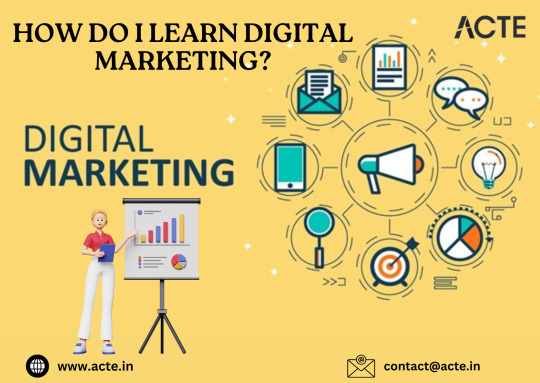
Grasping the Core Principles
Embarking on your digital marketing odyssey requires a firm grasp of the foundational principles. Digital marketing encompasses a multifaceted landscape comprising social media marketing, search engine optimization (SEO), content marketing, email marketing, pay-per-click (PPC) advertising, and beyond. Each facet plays a pivotal role in connecting with and engaging your target audience.
Commence your journey by immersing yourself in the essence and utility of each digital marketing channel. For instance, social media marketing serves as a conduit for businesses to forge connections with their audience across platforms such as Facebook, Instagram, Twitter, and LinkedIn, while SEO serves as the bedrock for enhancing a website's visibility in search engine results.
Embracing Online Learning
One of the most potent avenues for acquiring digital marketing prowess lies in online learning platforms. The likes of Coursera, Udemy, and HubSpot Academy offer an extensive array of courses catering to various facets of digital marketing. Whether you're a neophyte or a seasoned practitioner seeking to augment your skill set, there exists a plethora of courses tailored to meet your requirements.
When perusing online courses, seek out those that proffer a structured curriculum, practical exercises, and industry-endorsed certifications. Many courses also afford opportunities for engagement with instructors and fellow learners, facilitating collaborative learning and knowledge exchange.
Keeping Abreast of Industry Trends
The realm of digital marketing is in a perennial state of flux, characterized by the continual emergence of novel trends and technologies. To maintain a competitive edge, it's imperative to remain abreast of the latest industry trends and best practices.
Cultivate a habit of staying attuned to reputable digital marketing blogs, subscribing to industry newsletters, and participating in webinars and conferences. These fountains of wisdom furnish invaluable insights into nascent trends, innovative strategies, and illuminating case studies spotlighting successful digital marketing endeavors. Finding the appropriate abilities is just as vital as selecting the appropriate tactics and methods. It can be very beneficial in this situation to register in the Digital Marketing Online Certification.

Enacting Hands-On Practice
While theoretical knowledge serves as a springboard, the crucible of hands-on experience is indispensable in mastering digital marketing. Establish your own blog or social media platforms to experiment with diverse tactics and strategies. Translate the theoretical underpinnings gleaned from online courses and industry resources into tangible outcomes through real-world projects.
Embrace a spirit of experimentation, and employ analytical tools to scrutinize your endeavors and glean actionable insights. The data-driven nature of digital marketing empowers you to refine your strategies iteratively based on empirical evidence.
Cultivating Specialization
As you traverse the digital marketing landscape, contemplate delving into a specialized niche aligned with your passions and proficiencies. Specialization enables you to delve deeper into a specific facet of digital marketing, be it SEO, social media advertising, email marketing, or content creation.
Becoming a connoisseur in a niche not only demarcates you from the crowd but also engenders myriad opportunities for career advancement. Businesses perpetually seek specialists capable of proffering astute insights and delivering tangible results within their niche domain.
Conclusion
Journeying towards mastery in digital marketing entails a multifaceted expedition characterized by unwavering dedication, perpetual learning, and adaptability. By internalizing the core principles, engaging with online learning platforms, staying abreast of industry trends, enacting hands-on practice, and cultivating specialization, you can forge a path towards proficiency in this dynamic arena.
Remember, digital marketing is an art imbued with nuance and dynamism. Embrace the ethos of experimentation and iteration, and chart a course tailored to your unique objectives and target audience. With perseverance and a strategic approach, you can harness the transformative potential of digital marketing to propel your endeavors to unprecedented heights in the digital realm.
#tech#training#digital marketing#digital marketing company#digital marketing course#email marketing#online marketing#search engine optimization#seo#seo services
12 notes
·
View notes
Text
Revolutionizing B2B Sales: Advanced Outbound Lead Generation Strategies for the Digital Era
The Changing Landscape of Business Development
In today's hyper-connected world, traditional sales approaches are becoming obsolete. Successful businesses are reimagining outbound lead generation as a strategic, data-driven process.
Core Principles of Modern Outbound Lead Generation
Transformative Approach
Intelligence-driven targeting
Precision communication
Value-centric engagement
Relationship-first methodology
Strategic Frameworks for Success
Intelligent Prospect Identification
Advanced market segmentation
Predictive buyer persona development
Deep competitive intelligence
Behavioral pattern analysis
Precision Targeting Techniques
Account-based marketing strategies
Micro-targeted communication
Contextual engagement models
Personalization at scale
Technology: The Competitive Differentiator
Cutting-Edge Tools
AI-powered lead scoring
Machine learning algorithms
Sophisticated CRM integrations
Automated outreach platforms
Real-time analytics dashboards
Communication Mastery
Engagement Strategies
Hyper-personalized messaging
Value proposition alignment
Pain point addressing
Storytelling in communication
Minimal friction approach
Sales Enablement Techniques
Content-Driven Approach
Thought leadership development
Educational content strategies
Trust-building resources
Industry insights sharing
Psychological Engagement
Emotional intelligence in sales
Trust acceleration techniques
Authentic relationship building
Consultative selling mindset
Performance Measurement
Critical Metrics
Conversion rate optimization
Lead quality scoring
Customer acquisition cost
Sales cycle acceleration
Pipeline velocity
Advanced Technological Integration
Predictive analytics
Natural language processing
Conversational intelligence
Automated follow-up systems
Cross-platform tracking
Overcoming Common Challenges
Breaking through noise
Avoiding generic approaches
Managing rejection
Maintaining consistent engagement
Continuous learning and adaptation
Future-Proofing Sales Strategies
Emerging Trends
AI-augmented selling
Hyper-personalization
Predictive engagement models
Integrated multi-channel approaches
Conclusion
Successful outbound lead generation is an art and science of strategic, technology-enabled, human-centric approach.
Innovate. Connect. Grow.
2 notes
·
View notes
Text


Navigating the Evolving Travel Trends: Past, Present, and Future✈️




The past five years have seen the travel industry undergo a seismic shift, shaped by unforeseen circumstances, evolving priorities, and technological advancements.

Past Trends (2019-2024):
1. Rise of Staycations and Local Travel: With global uncertainty, people sought comfort in familiar surroundings, boosting local tourism and staycations. This trend also fueled the popularity of unique, nearby experiences like glamping or micro-adventures.
2. Experiences over Destinations: Travelers craved deeper connections and immersion, prioritizing authentic experiences over simply ticking off landmarks. This led to a surge in cultural tours, voluntourism, and off-the-beaten-path adventures.
3. Bleisure Travel: The lines between business and leisure blurred as remote work options became more prevalent. Travelers extended business trips to include leisure activities, driving demand for flexible booking options and co-working spaces in tourist destinations.
4. Sustainability in Focus: Environmental consciousness grew, leading to a rise in eco-friendly travel choices. Travelers sought out sustainable accommodations, responsible tours, and destinations committed to conservation.
5. Tech-Driven Transformation: Technology played an increasingly crucial role, from AI-powered travel recommendations to contactless payments and immersive virtual tours. This trend also fueled the growth of travel apps and online booking platforms.

Possible Future Trends (2024-2029):
1. Hyper-Personalization: Travel will become increasingly tailored to individual preferences, with AI and machine learning creating bespoke itineraries and experiences based on unique interests, travel styles, and budgets.
2. Wellness & Retreats: The focus on mental and physical wellbeing will continue, with travelers seeking destinations and experiences that promote mindfulness, relaxation, and holistic rejuvenation.
3. Transformative Travel: The desire for personal growth and self-discovery will drive demand for transformative travel experiences, such as volunteering, cultural immersion programs, and journeys focused on personal development.
4. Space Tourism: As technology advances and costs decrease, space tourism could become more accessible, offering a unique and futuristic travel experience for a select few.
5. Metaverse Travel: Virtual and augmented reality experiences will continue to evolve, potentially offering immersive travel simulations that allow people to explore destinations without physically being there.

The past five years have painted a dynamic picture of travel trends. Driven by changing lifestyles, social values, and technological advancements, travelers have embraced experiences over mere sightseeing, pursued self-discovery through solo adventures, and sought responsible, personalized journeys.
Looking ahead, several exciting possibilities emerge. Hyper-personalization will be key, with tech facilitating highly customized itineraries that resonate deeply with individual aspirations. Wellness and retreat travel will boom, as people seek mental, physical, and spiritual rejuvenation. Additionally, destination stewardship will take center stage, with travelers actively partnering with locals to preserve cultures and environments.
This evolving landscape presents both challenges and opportunities. The travel industry must adapt to offer personalized experiences at scale, cater to the growing wellness market, and integrate sustainable practices seamlessly. Travelers, meanwhile, have the power to choose wisely, supporting responsible tourism and contributing to positive change.
While technology will play a vital role, human connection will remain paramount. Authentic interactions, cultural immersion, and meaningful experiences will be the true differentiators in this new era of travel. Ultimately, the future of travel promises a deeper, more personalized, and responsible way to explore the world, driven by our collective desire for connection, transformation, and discovery.
These are just a glimpse into the ever-evolving world of travel. As we move forward, sustainability, personalization, and transformative experiences will likely take center stage, while technology will continue to reshape how we plan, book, and experience travel. The future of travel promises to be exciting, diverse, and deeply attuned to the evolving needs and desires of travelers worldwide.

#travel writing & photography#travel writing#travel#adventure#blog#writing#trends#gif anime#gifset#dividers#cute#div cr plutism
7 notes
·
View notes
Text

In today's dynamic media and entertainment industry, mastering xmltv schedule epg channel can significantly boost your programming career hunting and technological advancement in computer programing for creating Electronic Program Guide (EPG).
This comprehensive blog post offers detailed, informative, and actionable advice on how to leverage xml epg for tv programming skills to propel your career and provides tips on creating an advanced resume that highlights your expertise.
Importance of XML EPG Skills for Career Growth:
XML EPG skills are highly valued in various job roles and industries, including IPTV/OTT content management, broadcast engineering, and media technology.
By acquiring and developing these skills, you become more competitive and attractive to potential employers. The demand for XML EPG-skilled professionals is growing, as the industry recognizes the necessity of accurate and efficient program guides.
Tips for Creating an Advanced Resume:
To effectively showcase your XML EPG skills and experience on a resume, consider the following tips:
Quantify Achievements: Highlight specific XML EPG projects you've worked on and quantify the impact they had on the organization. For example, mention the number of channels or viewers impacted by your XML EPG implementations.
Emphasize Technical Proficiencies: Detail the XML EPG-related software, tools, and systems you are proficient in. This may include XML authoring tools, schema languages (such as XSD), and EPG management platforms.
Include Certifications and Training: If you have pursued any XML EPG-specific certifications or completed relevant training programs, mention them prominently on your resume to demonstrate your commitment to professional development.
Tailor the Resume: Customize your resume to align with the specific job roles and industries you are targeting. Highlight XML EPG accomplishments and skills that directly relate to the desired position, showcasing your relevance to potential employers.
Developing XML EPG expertise can significantly enhance your career growth in the media and entertainment industry.
By mastering XML EPG skills and effectively highlighting them on your resume, you position yourself as a sought-after professional in fields such as IPTV/OTT content management, broadcast engineering, and media technology.
Remember to continuously update your skills, stay informed about industry trends, and seek opportunities to expand your knowledge in XML EPG.
Investing in XML EPG knowledge and applying it to your career advancement is a strategic move in today's competitive job market. Emphasize your XML EPG skills on your resume and seek out opportunities to showcase your expertise.
As you progress in your career, continue to enhance your XML EPG proficiency and stay up-to-date with emerging technologies and industry developments. By doing so, you'll position yourself for long-term success and open doors to exciting and rewarding opportunities.
Take the next steps to further your XML EPG learning by exploring industry resources, participating in relevant forums or communities, and seeking additional training or certifications.
By doing so, you'll enhance your XML EPG skills, augment your career prospects, and position yourself as a valuable asset in the evolving media and entertainment industry.
youtube
4 notes
·
View notes
Text
What’s Next in Education? Trends Shaping the Future

As an education researcher, I have conducted numerous experiments to uncover the trends shaping the future of education. These trends, driven by technology and a better understanding of learning processes, promise to transform how we teach and learn.
Personalized Learning
Personalized learning adapts to each student's needs, making education more effective. Research shows that using adaptive learning technologies can improve student engagement and performance. For example, my experiments have found that students using productive or personalized learning tools often understand material better and retain information longer.
Blended Learning
Blended learning mixes traditional classroom teaching with online learning or you can use youtube playlist by knowing their length. This approach offers flexibility and lets students learn at their own pace. Studies, including my own, show that blended learning can help students do better than those in traditional classes. It combines the best of both worlds, making learning more accessible and effective.
Project-Based Learning (PBL)
Project-based learning focuses on real-world problems, encouraging students to apply what they learn. My research shows that PBL boosts critical thinking and creativity. Students working on projects tend to be more motivated and develop better problem-solving skills.
Gamification
Gamification adds game elements to learning, making it more engaging. Experiments show that students are more motivated and participate more when learning feels like a game. Points, badges, and leaderboards can make studying fun and competitive.
Social and Emotional Learning (SEL)
Social and emotional learning helps students develop important life skills. My studies show that SEL improves academic performance and reduces behavioral problems. Students in SEL programs are better at managing their emotions and interacting with others.
Microlearning
Microlearning breaks information into small, easy-to-understand chunks. This method helps students learn complex subjects more effectively. Research, including my own, shows that microlearning improves understanding and retention of information. For instance, knowing the YouTube playlist length can help organize and manage educational content more efficiently.
Virtual and Augmented Reality (VR/AR)
VR and AR provide immersive learning experiences. These technologies can simulate real-world environments, making learning more engaging. My research shows that VR and AR help students understand complex subjects better by allowing them to interact with the material in a hands-on way.
Lifelong Learning
Lifelong learning encourages continuous education. As the job market changes, it's important to keep learning new skills. My studies suggest that promoting lifelong learning helps individuals stay competitive and adapt to new challenges.
Learning Analytics
Learning analytics uses data to improve education. By analyzing student performance, educators can make better decisions to support learning. My experiments show that data-driven insights can personalize learning and enhance teaching methods.
Collaborative Learning
Collaborative learning helps students work together to achieve common goals. This method improves communication and teamwork skills. Research, including my own, shows that students who learn collaboratively tend to do better academically and are better prepared for the workplace.
By understanding and embracing these trends, educators can create more effective and engaging learning environments.
2 notes
·
View notes
Text
The Rise of Augmented Reality in Everyday Life
Augmented Reality (AR) is a transformative technology that superimposes digital information onto the real world, enhancing our perception of reality. Unlike Virtual Reality (VR), which creates an entirely immersive virtual environment, AR overlays digital elements—such as images, sounds, or text—onto our physical surroundings using devices like smartphones, tablets, or AR glasses.
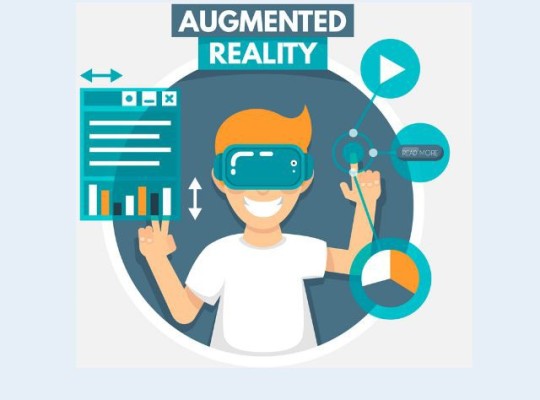
Present-day Uses of AR Augmented reality (AR) is altering how we interact with technology and the world around us by making substantial breakthroughs across multiple fields.
Retail: AR is being used by retailers to improve the in-store experience. Customers may see how makeup, accessories, and clothing will appear on them without having to visit a store by using virtual try-on apps. One example is the AR app from IKEA, which allows users to see how furniture would fit and appear in their houses.
Healthcare: AR is being used in healthcare to help with medical training and complicated procedures. During procedures, surgeons can access real-time data and 3D organ renderings with AR glasses, which will increase accuracy and improve results.
Education: By increasing interaction and engagement, augmented reality is revolutionizing the way people learn. By allowing students to investigate 3D replicas of historical sites, the solar system, or anatomical structures, they may make abstract ideas come to life.
Entertainment: AR has been warmly welcomed by the entertainment sector. Augmented reality (AR) is giving consumers new experiences in everything from immersive movie advertising to apps like Pokémon Go that mix virtual characters with actual locales.

Improving Social Media and Mobile App User Experiences AR features are being added to mobile apps and social media platforms more often to draw consumers in. AR filters are a feature of Instagram and Snapchat that enhance images and videos with fun, animated effects, encouraging user creativity and interaction. With the use of augmented reality (AR) apps like Google Lens, users can quickly get information about items, landmarks, and other subjects by pointing the camera of their phone at objects.
Effects on Marketing and Advertising Plans Through the creation of immersive, interactive campaigns that grab consumers' attention, augmented reality is transforming marketing and advertising. Through gamified marketing, interactive advertisements, and virtual product demos, brands are utilizing augmented reality to increase engagement and conversion. For instance, Pepsi's augmented reality bus stop campaign left a lasting impression by delighting onlookers with lifelike digital animations.
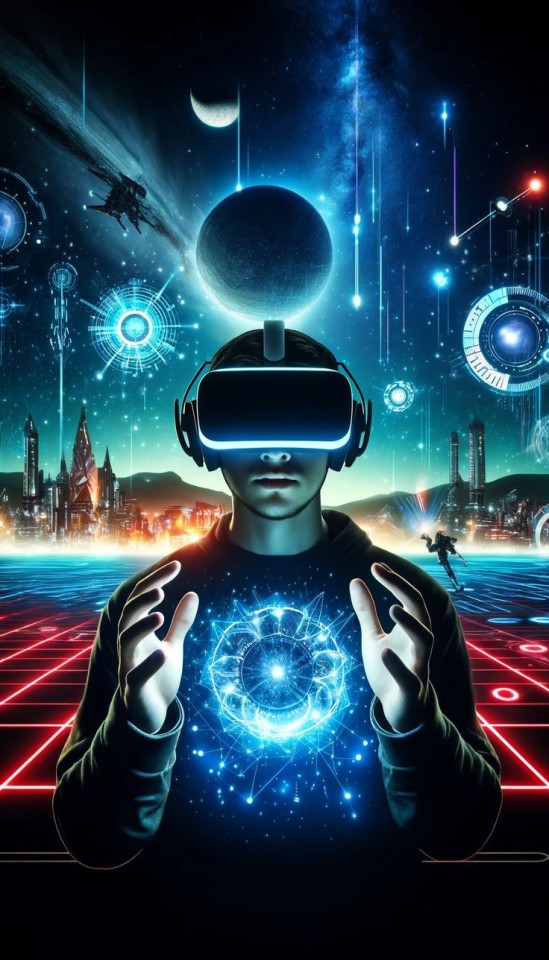
Prospects & Development Trends for AR in the Future The development of augmented reality (AR) is expected to continue due to ongoing technological developments. AR experiences will be improved, becoming more smooth and accessible with advancements in AR glasses, computing power, and AI integration. We may anticipate that augmented reality (AR) will revolutionize a number of businesses and how we communicate with one another.
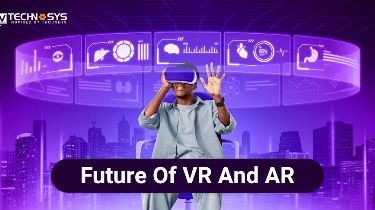
Conclution The emergence of augmented reality is evidence of the infinite applications of technology. AR is changing our daily experiences in a variety of ways, from improving healthcare and retail to transforming education and entertainment. As augmented reality develops, it promises to usher in a day where the virtual and real worlds coexist peacefully, presenting countless chances for creativity and interaction.
2 notes
·
View notes
Text

What is marketing:-
Introduction
In the fast-paced world of digital marketing, staying ahead of the curve is crucial for businesses aiming to succeed in 2024 and beyond. With technological advancements and shifting consumer behaviors, the landscape of marketing continues to evolve rapidly. This blog explores key strategies and trends that businesses can leverage to thrive in today's digital age.
1. Understanding the Current Marketing Landscape
- Digital Transformation: How businesses are adapting to digital-first strategies.
- Consumer Behavior Shifts: The rise of mobile-first browsing and shopping.
- Data-Driven Insights: Harnessing big data for targeted marketing campaigns.
2. Key Digital Marketing Strategies
- Search Engine Optimization (SEO): Best practices for ranking high on search engines.
- Content Marketing: Creating valuable content to engage and convert customers.
- Social Media Marketing: Leveraging platforms like Facebook, Instagram, and TikTok for brand awareness and customer engagement.
- Email Marketing: Building effective email campaigns for lead nurturing and customer retention.
- Paid Advertising: Maximizing ROI through Google Ads, Facebook Ads, and other paid channels.
3. Emerging Trends in 2024
- AI and Machine Learning: How AI is transforming marketing automation and personalized customer experiences.
- Voice Search Optimization: Optimizing content for voice search queries.
- Augmented Reality (AR) and Virtual Reality (VR): Enhancing customer engagement through immersive experiences.
- Blockchain Technology: Ensuring transparency and security in digital marketing efforts.
4. Case Studies and Success Stories
- Case Study 1: How Company X achieved a 200% increase in sales through an innovative digital marketing campaign.
- Case Study 2: Lessons learned from Company Y's successful social media influencer collaboration.
- Case Study 3: Implementing AI-driven strategies at Company Z: A roadmap to success.
5. The Future of Marketing: Predictions and Recommendations
- Personalization: Tailoring marketing efforts to individual consumer preferences.
- Ethical Marketing: Building trust and credibility through ethical practices.
- Continuous Learning: The importance of staying updated with industry trends and evolving technologies.
Conclusion
As we move further into 2024, digital marketing will continue to evolve, presenting both challenges and opportunities for businesses. By embracing innovative strategies, leveraging new technologies, and staying agile, businesses can position themselves for success in the ever-changing digital landscape.
Call to Action
Ready to take your marketing efforts to the next level in 2024? Contact us today to learn how our tailored strategies can help your business thrive in the digital age.
This outline provides a comprehensive framework for a 1500-word blog post on digital marketing. You can expand each section with detailed explanations, examples, and insights to provide value to your readers and establish your authority in the field.
2 notes
·
View notes
Text
The Future of Digital Marketing
The future of digital marketing is poised for significant transformation, driven by technological advancements and evolving consumer behaviors. Here are key trends and innovations shaping the future of digital marketing:
Artificial Intelligence (AI) and Machine Learning: AI and machine learning will continue to revolutionize digital marketing by enabling hyper-personalized customer experiences, predictive analytics, and advanced customer service solutions like chatbots. These technologies will help businesses understand and anticipate customer needs more accurately.
Voice Search Optimization: With the rise of voice-activated devices such as Amazon Echo and Google Home, optimizing content for voice search is becoming crucial. This trend requires businesses to focus on natural language processing and long-tail keywords to ensure their content is easily discoverable through voice queries.
Augmented Reality (AR) and Virtual Reality (VR): AR and VR are set to create immersive customer experiences, offering new ways for brands to engage with their audience. Virtual try-ons, interactive product demos, and immersive storytelling will become more prevalent, enhancing customer interaction and satisfaction.
Video Content Dominance: Video content will continue to dominate digital marketing strategies. Platforms like YouTube, TikTok, and Instagram Reels are already popular, and the trend towards live streaming and interactive videos will grow, providing engaging and shareable content.
Social Commerce: Social media platforms are increasingly integrating e-commerce features, allowing users to shop directly from their feeds. This trend simplifies the customer journey and drives sales, making social commerce a significant area of growth.
Privacy and Data Security: As consumers become more aware of data privacy issues, businesses must prioritize transparency and data security. Complying with regulations and building trust through ethical data practices will be essential.
Embracing these trends and technologies will enable businesses to stay competitive and effectively engage with their audiences in the dynamic digital landscape.
#digital marketing#Artificial Intelligence (AI)#Machine Learning#Augmented Reality (AR)#Social Commerce
2 notes
·
View notes
Text

BIM Careers: Building Your Future in the Digital AEC Arena
The construction industry is undergoing a digital revolution, and BIM (Building Information Modeling) is at the forefront. It's no longer just a fancy 3D modeling tool; BIM is a collaborative platform that integrates data-rich models with workflows across the entire building lifecycle. This translates to exciting career opportunities for those who can harness the power of BIM.
Are you ready to step into the octagon of the digital construction arena? (Yes, we're keeping the fighting metaphor alive!) Here's a breakdown of the in-demand skills, salary ranges, and future prospects for BIM professionals:
The In-Demand Skillset: Your BIM Arsenal
Think of your BIM skills as your tools in the digital construction toolbox. Here are the top weapons you'll need:
BIM Software Proficiency: Mastering software like Revit, ArchiCAD, or Navisworks is crucial. Understanding their functionalities allows you to create, manipulate, and analyze BIM models.
Building Science Fundamentals: A solid grasp of architectural, structural, and MEP (mechanical, electrical, and plumbing) principles is essential for creating BIM models that reflect real-world construction realities.
Collaboration & Communication: BIM thrives on teamwork. The ability to collaborate effectively with architects, engineers, and other stakeholders is paramount.
Data Management & Analysis: BIM models are data-rich. Being adept at data extraction, analysis, and interpretation unlocks the true potential of BIM for informed decision-making.
Problem-Solving & Critical Thinking: BIM projects are complex. The ability to identify and solve problems creatively, while thinking critically about the design and construction process, is invaluable.
Salary Showdown: The BIM Payday Punch
Now, let's talk about the real knock-out factor – salaries! According to Indeed, BIM professionals in the US can expect an average annual salary of around $85,000. This number can vary depending on experience, location, and specific BIM expertise. Entry-level BIM roles might start around $60,000, while BIM Managers and BIM Specialists with extensive experience can command salaries exceeding $100,000.
Future Forecast: A Bright BIM Horizon
The future of BIM is bright. The global BIM market is projected to reach a staggering $8.8 billion by 2025 (Grand View Research). This translates to a continuous rise in demand for skilled BIM professionals. Here are some exciting trends shaping the future of BIM careers:
BIM for Specialty Trades: BIM is no longer just for architects and engineers. We'll see increased adoption by specialty trades like HVAC technicians and fire protection specialists.
Integration with AI and Machine Learning: Imagine BIM models that can predict potential issues or suggest optimal design solutions. AI and machine learning will revolutionize BIM capabilities.
VR and AR for Enhanced Collaboration: Virtual Reality (VR) and Augmented Reality (AR) will allow for immersive BIM model walkthroughs, facilitating better collaboration and design communication.
Ready to Join the BIM Revolution?
The BIM landscape offers a dynamic and rewarding career path for those with the right skills. If you're passionate about technology, construction, and shaping the future of the built environment, then BIM might be your perfect career match. So, hone your skills, embrace the digital revolution, and step into the exciting world of BIM with Capstone Engineering!
#tumblr blogs#bim#careers#buildings#bim consulting services#bim consultants#construction#aec#architecture#3d modeling#bim coordination#consulting#3d model#bimclashdetectionservices#engineering#MEP engineers#building information modeling#oil and gas#manufacturing#virtual reality#collaboration#bim services#uaejobs
2 notes
·
View notes
Text
The Future of Digital Marketing: Exploring Emerging Trends and Strategies
In the dynamic world of digital marketing, being ahead of the curve is critical for efficiently reaching and engaging audiences in a continuously changing marketplace. As we look ahead, new technologies, changing customer behaviors, and inventive techniques are defining the future of digital marketing. Let's look at some developing trends and strategies that are likely to shape the future of this intriguing field.
Personalized Marketing
Personalization will continue to be a key component of successful digital marketing campaigns. Marketers can create highly personalized experiences tailored to individual interests and behaviors by leveraging massive volumes of data and advanced analytics. From personalized email campaigns to dynamic website content and targeted advertising, organizations will use personalization to increase customer engagement and conversions.
Artificial Intelligence (AI) and Machine Learning
Artificial intelligence and machine learning are transforming digital marketing by enabling automation, predictive analytics, and real-time personalization. AI-powered chatbots improve customer care, while predictive analytics help marketers anticipate consumer wants and optimize advertising. As AI evolves, its position in digital marketing will only grow, providing marketers with strong tools for streamlining operations and delivering more effective campaigns.
Voice search optimization
Voice search is growing increasingly popular as virtual assistants like Siri, Alexa, and Google Assistant gain traction. Optimizing content for voice search necessitates a shift in SEO tactics, with a focus on conversational keywords and brief, straightforward responses to frequent requests. Marketers must respond to this trend by optimizing content for voice inquiries to ensure exposure in voice search results.
Video Marketing Dominance
Video content continues to dominate digital platforms, catching the audience's attention and increasing interaction. Short-form videos on sites such as TikTok and Instagram Reels are especially popular with younger audiences. Live streaming is also growing in popularity, providing authentic and participatory experiences for viewers. Incorporating video into marketing efforts will be critical for organizations seeking to connect with viewers in meaningful ways.
Influencer Marketing Evolution
Influencer marketing is moving beyond traditional endorsements to prioritize authenticity, transparency, and long-term connections. Consumers demand authentic recommendations from relatable personalities; therefore, micro-influencers with narrow followings are becoming more popular. Brands will need to work strategically with influencers to develop authentic content that resonates with target audiences and is consistent with brand values.
Augmented reality (AR) and virtual reality (VR)
AR and VR technologies are altering customer experiences by enabling marketers to provide immersive and interactive content. From virtual try-on experiences in the cosmetics business to virtual tours of real estate properties, AR and VR are transforming product presentation and narrative. As these technologies become more widely available, marketers will use AR and VR to increase engagement and drive conversions.
Sustainability and purpose-driven marketing
Consumers are increasingly drawn to brands that value sustainability and social responsibility. Purpose-driven marketing that supports environmental or social causes appeals to conscious consumers. To gain the trust and allegiance of socially conscious customers, brands must legitimately integrate sustainability into their marketing strategy, emphasizing transparency and accountability.
Conclusion
The future of digital marketing is dynamic and diverse, fueled by innovation, technology, and shifting customer behavior. By embracing emerging trends and implementing innovative methods, brands can navigate this changing landscape more effectively than ever before. As we move ahead, tailored experiences, AI-driven analytics, immersive content, and purpose-driven initiatives will shape the future of digital marketing, allowing organizations to make meaningful connections and generate long-term success in the digital age. Embrace these trends and methods to stay ahead in the fascinating journey of digital marketing transformation. If you want to become a digital marketing expert, then you can study Zoople Technologies three-month digital marketing course.
To read more content like this visit https://zoople.in/blog/
Visit our website https://zoople.in/
#artificial intelligence#python#kochi#kerala#seo#google#digital marketing#programming#machine learning#software engineering
3 notes
·
View notes
Text
The Future of Digital Advertising
In the ever-evolving landscape of digital marketing, staying ahead of the curve is paramount for businesses striving to remain competitive and relevant. As technology continues to advance and consumer behaviors evolve, new trends emerge, reshaping the digital marketing landscape. In this article, we'll explore some of the most prominent emerging trends in digital marketing and speculate on what the future holds for this dynamic industry.
1.Artificial Intelligence (AI) and Machine Learning:
AI and machine learning have already made significant strides in revolutionizing digital marketing, and their influence is only expected to grow. AI-powered chatbots, personalized recommendation engines, and predictive analytics are just a few examples of how AI is transforming marketing strategies. In the future, we can anticipate even more sophisticated AI applications, such as predictive content creation, advanced customer segmentation, and dynamic pricing optimization.
2.Voice Search Optimization (VSO):
With the rising popularity of voice-activated devices and virtual assistants, voice search is poised to become a dominant force in digital marketing. Businesses will need to adapt their SEO strategies to accommodate natural language queries and conversational search patterns. Optimizing content for voice search, leveraging schema markup, and focusing on local SEO will be key tactics for brands looking to capitalize on this emerging trend.
3.Augmented Reality (AR) and Virtual Reality (VR):
AR and VR technologies have the potential to revolutionize the way consumers interact with brands and products. From immersive shopping experiences to virtual try-on features, AR and VR offer exciting opportunities for marketers to engage audiences in new and innovative ways. As these technologies become more accessible and mainstream, we can expect to see widespread adoption across various industries, including retail, entertainment, and tourism.
4.Interactive Content Experiences:
As consumers increasingly seek out interactive and engaging content, marketers are embracing interactive content formats such as quizzes, polls, calculators, and 360-degree videos. These interactive experiences not only capture users' attention but also provide valuable insights into their preferences and behaviors. Moving forward, we can anticipate the continued growth of interactive content as brands look for creative ways to stand out in a crowded digital landscape.
5.Privacy and Data Protection:
In light of increasing concerns about data privacy and security, consumers are becoming more cautious about sharing their personal information online. As a result, there is a growing emphasis on transparency, consent, and data protection in digital marketing practices. Brands that prioritize privacy and build trust with their audience will have a competitive advantage in the future, while those that neglect these considerations may face backlash and reputational damage.
6.Purpose-Driven Marketing:
Today's consumers expect more from brands than just products and services—they want to support companies that align with their values and beliefs. Purpose-driven marketing, which focuses on social responsibility, sustainability, and ethical business practices, is gaining traction as consumers seek out brands that make a positive impact on society and the environment. In the future, we can expect to see more brands integrating purpose-driven messaging into their marketing campaigns and corporate branding efforts.
In conclusion, the future of digital marketing is filled with exciting possibilities and opportunities for innovation. By embracing emerging trends such as AI, voice search optimization, AR/VR, interactive content, privacy protection, and purpose-driven marketing, businesses can position themselves for success in an increasingly competitive digital landscape. However, staying ahead of the curve requires continuous adaptation, experimentation, and a willingness to embrace change. As we look to the future, one thing is certain: the only constant in digital marketing is change.
3 notes
·
View notes
Text
Evolution Explored: My Five-Year Voyage through Digital Marketing
Introduction: Navigating the Digital Realm
In the swiftly changing world of digital marketing, adaptability reigns supreme. Over the past half-decade, my expedition through this dynamic arena has been a testament to the constant flux of online strategies. From mastering storytelling to maneuvering through algorithmic shifts, each step has molded me into a more adept digital marketer. Join me as I reflect on the insights gleaned and lessons learned during this transformative odyssey.

Embracing Adaptation: Agility as a Cornerstone
Flexibility stands tall as a cornerstone in the ever-shifting landscape of digital marketing. Trends come and go, algorithms undergo metamorphosis, and consumer preferences evolve incessantly. To thrive, marketers must pivot swiftly, aligning their strategies with the current milieu. Whether adjusting ad campaigns based on performance metrics or integrating emerging technologies like augmented reality, nimbleness is pivotal to outpacing the competition.
Crafting Compelling Content: Harnessing the Power of Narrative
At the nucleus of any triumphant digital marketing initiative lies captivating content. Whether conveyed through a blog post, social media snippet, or video advertisement, storytelling serves as the conduit for capturing the hearts of contemporary consumers. Throughout the past five years, I've refined my craft in crafting narratives that resonate deeply with audiences. From spinning compelling brand tales to leveraging user-generated content, I've come to appreciate that the most potent campaigns are those that stir emotions and tell a story.
Data-Driven Decisions: Leveraging Analytics for Strategic Precision
In today's data-driven epoch, analytics stand as the bedrock of digital marketing triumphs. By scrutinizing metrics such as website traffic, conversion rates, and social media engagement, marketers unlock invaluable insights into campaign efficacy, enabling judicious allocation of resources. Over the past five years, I've adeptly wielded tools like Google Analytics and Facebook Insights to glean actionable data, fine-tuning marketing strategies for optimal impact.
Prioritizing Engagement: Cultivating Customer Connections
In the digital milieu, cultivating genuine relationships with customers holds unparalleled significance. Whether through responsive social media interactions or personalized email outreach, authentic engagement serves as the linchpin for fostering brand allegiance and engendering repeat patronage. Throughout my journey, I've made it my mission to prioritize customer engagement across all digital touchpoints. By spearheading interactive social media campaigns and tailoring communication to individual preferences, I've observed firsthand the transformative power of meaningful interactions.
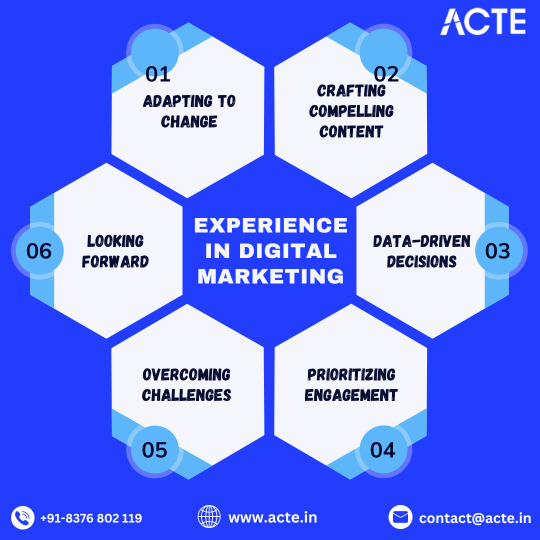
Overcoming Challenges: Fortitude Amidst Adversity
While digital marketing teems with opportunities, it's not devoid of challenges. From grappling with algorithmic whims to navigating budget constraints and competitive pressures, resilience proves indispensable in surmounting obstacles. Over the past five years, I've encountered myriad challenges in the digital arena. Whether contending with sudden traffic fluctuations or mitigating social media crises, I've learned that steadfast determination is key to weathering storms and achieving success.
Looking Ahead: Embracing the Unfolding Digital Frontier
As I cast my gaze towards the future, I'm buoyed by the myriad opportunities that lie on the digital horizon. With advancements in technologies like artificial intelligence and virtual reality, the potential for innovation knows no bounds. By remaining inquisitive, adaptable, and unwavering in my commitment to delivering value, I am poised to continue making a meaningful impact in this dynamic and ever-evolving sphere.
Conclusion: A Voyage of Growth and Enlightenment
In conclusion, my five-year voyage through digital marketing has been a transformative journey marked by growth, enlightenment, and adaptation. From mastering the nuances of storytelling to leveraging data-driven insights, each experience has contributed to my evolution as a digital marketer. As I chart my course into the future, I am filled with anticipation for the opportunities that lie ahead and confident in my ability to navigate the ever-changing currents of the digital realm.
#tech#digital marketing#training#digital marketing company#digital marketing course#email marketing#online marketing#search engine optimization#seo#seo services
4 notes
·
View notes
Text
How to Stay Updated on the Latest Digital Marketing Trends
Introduction:
In the ever-evolving landscape of digital advertising, staying up-to-date is not only useful; it is essential for achievement. With the era advancing unexpectedly, consumer behavior shifting, and new platforms emerging, digital marketers usually have to adapt their strategies. We'll discover powerful methods for staying up-to-date on today's digital advertising trends and leveraging them to improve your digital marketing offering.
Subscribe to Industry Newsletters:
Sign up for newsletters from legitimate websites and digital marketing systems.
Receive curated updates on enterprise trends, new equipment and emerging techniques instantly to your inbox.
Engage in Social Media Communities:
Join applicable digital advertising companies on structures like LinkedIn, Facebook, and Twitter. Participate in discussions, share insights, and examine from the reviews of other professionals inside the area.
Attend Webinars and Virtual Events:
Stay up to date on upcoming webinars and digital activities inside the virtual advertising and marketing area.
Attend sessions hosted by industry professionals to benefit insights into rising tendencies and high-quality practices.
Enroll in Online Courses and Certifications:
Invest in continuous gaining knowledge of through on-line publications and certifications. Platforms like Coursera, LinkedIn Learning, and Google Digital Garage offer publications on the modern digital marketing traits and techniques.
Listen to Podcasts: Podcasts are a handy manner to stay informed at the same time as on the cross. Subscribe to digital advertising podcasts that feature interviews with industry leaders and discussions on present day traits.
Set up Google Alerts:
Use Google Alerts to obtain email notifications about unique key phrases related to digital advertising and marketing developments.
Stay informed in real time about contemporary news, articles and discussions that can be used for your entertainment.
Network at Industry Conferences:
Attend industry meetings and networking activities.
Connect with professionals, attend workshops, and gain firsthand insights into the modern technology and tendencies shaping the virtual advertising panorama.
Experiment with Emerging Technologies:
Stay hands-on with experiments with growing technologies that include augmented reality, voice search and artificial intelligence.
Understanding how the technology draws will give you an aggressive edge in applying modern techniques.
Regularly Update Your Skill Set:
Digital advertising and marketing is a dynamic field; often replace your skill set.
Take gain of on-line assets, workshops, and education classes to keep your capabilities sharp and applicable.
Conclusion:
In the fast-paced global virtual advertising, keeping up with contemporary developments is a never-ending adventure. By applying a combination of lively learning, networking and staying in touch with enterprise experts, you can function yourself and your digital advertising and marketing services to thrive in the ever-changing digital panorama. Embrace curiosity, adaptability and constant schooling to live ahead of the curve and deliver exceptional results to your clients.
#best digital marketing company#digital marketing company in india#Latest Digital Marketing Trends#Digital Marketing Trends#digital marketing services#seo services#social media marketing services#best digital marketing company in pune#digital marketing company#best social media marketing company in pune
2 notes
·
View notes